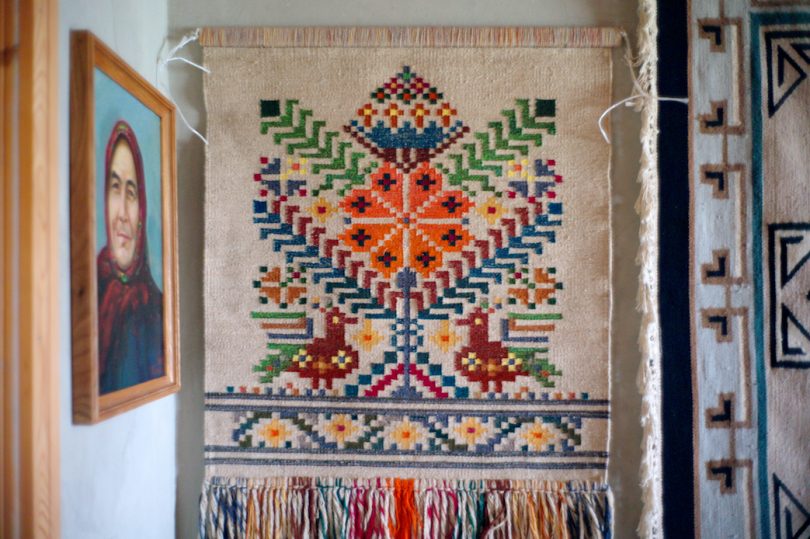Ukraine’s design scene opened its doors to a group of journalists and design experts for the very first time in an expedition organized by Victoria Yakusha of FAINA collection. Yakusha invited Roberto Baciocchi, legendary architect for Prada’s stores and an interior designer and art curator; Anna Lina Leno of Annaleena Studio; Madeline Asplund of Asplund Klingsted Interior; and Laura Snood of ICON Magazine, to experience the unique technologies used to make crafts in the Ukrainian countryside.
“While talking to my European colleagues at professional exhibitions in Milan, Paris, London and Stockholm, I realized how little they know about Ukraine and absolutely do not understand who we are. At the same time, I heard many times about the interest in booming Ukrainian contemporary design, as of something new that could soon set global trends,” Yakusha said.
Yakusha worried that these techniques were not being passed down, and were further being threatened by new, modern ways of production. Through the expedition, she wanted to present what Ukraine has to offer before it is too late.
“Many of these crafts are endangered, so interest in them from foreign designers and the media will also help to attract the attention of the internal audience,” she said.
The group’s favorite was the learning how to weave traditional Hutsul blankets otherwise known as “linzhnyk.” Each blanket’s pattern is symbolic and has meaning to the community.
In a workshop, they watched artisans turn sheep wool into beautiful rugs, carpets and home accessories. This made such an impression that Roberto Baciocchi purchased 19 carpets to use in his future interior projects. “The patterns of the Carpathian lizhniky are very authentic…the monochrome variants of these will suit a certain interior,” he said.
“What is done by the hands of a master has a completely different energy; each flaw of such a thing is its dignity, uniqueness, character,” he added.
There are fewer than 10 masters who continue to make Ukrainian “dark steamed ceramics.” Made from clay, fire and smoke, these pottery pieces were popular in the 1930s and even won the first prize at the Paris art exposition. Nowadays, furnaces are often falling into disrepair and then destroyed or abandoned.
“I also make pottery at home, but I use an electric potter’s wheel. It rotates at a constant speed when you step on the pedal. And in the Carpathians it was a traditional mechanical circle. When I sat down for it, all my skills disappeared, because it was necessary to measure forces – both rotate the potter’s wheel, and form clay,” said Snoad.
Asplund encouraged Ukrainian designers to market some of their products online, where they can reach a wider audience. “When I posted photos from the trip on my Instagram, many of my friends and colleagues started to write questions where and how to buy it. Thus, if the Ukrainian masters put their products on the Internet and delivered them to Europe, they would meet a great success,” Asplund offered.
Snoad remained optimistic about the survival of traditional craft in Ukraine. “In the past 3-5 years in the UK, the idea of manual, craft work has become very popular. We have a reality TV show on creating ceramic dishes… The interest in such things is huge,” she added.
from WordPress https://connorrenwickblog.wordpress.com/2019/02/12/four-designers-explain-why-ukrainian-carpets-and-crafts-could-be-the-next-big-thing/












No comments:
Post a Comment